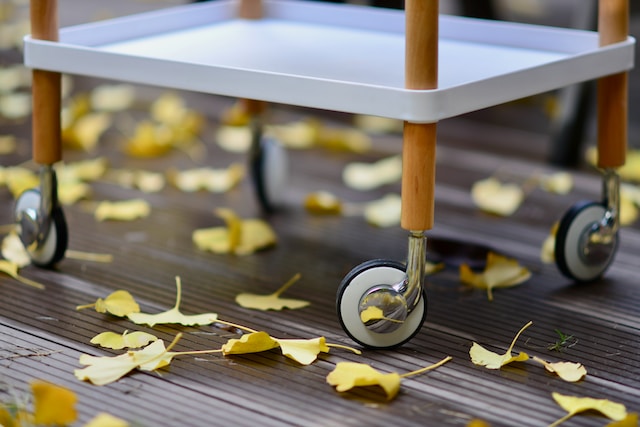Adding caster wheels to furniture and equipment makes them much easier to move. However, choosing the right wheels can be confusing. Casters come in various sizes, materials, and mounting types.
The casters and wheels you choose will depend on how the furniture or equipment will be used.
Material
The material that the caster wheels are made of is one of the most important factors to consider when selecting a new set. Wheel materials range widely from metal and nylon to rubber and polyurethane. The type of tread also plays an essential role in maneuverability and durability.
The flooring in your facility will also affect the type of casters you must choose for your furniture. For example, if you have a carpet that needs to be protected from scrapes, marks, and other damage, then soft casters like rubber or polyurethane are the best choice.
Rigid casters are another option that can be used on your furniture. These casters cannot swivel in 360 degrees, but they are much stronger than other caster types. They can be fastened to the floor using a plate mount or inserted through a stem to secure the caster. A good caster must be able to hold the weight of the load it carries while moving on the wheels and should not break or crack under pressure.
Style
While they’re often used interchangeably, casters and wheels are pretty different. While both facilitate movement, casters are more than just wheels and offer various mounting, material, tread, and swiveling options.
In addition, the type of flooring you have can impact which caster wheels will work best for you. For example, if you have carpet or soft floors that need to be protected from scratches, scrapes, and other damage, choose soft casters made from rubber or polyurethane. On the other hand, if you have hard surfaces such as concrete and want your furniture to move more quickly, choose more challenging casters.
In addition, if you need your furniture to move in a specific direction, consider opting for swivel casters that can rotate 360 degrees or tech-lock brakes that allow the wheel to stop in one place. Brake types are essential to ensure the safety of your staff and prevent your equipment from causing harm to workers or customers.
Weight Capacity
When choosing casters, you must know how much weight the casters can hold. Guessing is dangerous and can damage the furniture and cause physical injury. Calculating the load requirement is easy – multiply the capacity of the caster by the number of casters you will attach to the furniture. It’s always best to choose a higher capacity caster than you think you need to account for uneven loads, flooring type, etc.
The wheel material and diameter are other factors that need to be considered. For instance, if you use the casters on a hard surface, you should pick wheels that can support the weight while offering a smooth ride and lowering the possibility of floor damage. These wheels are typically made of polyurethane or rubber.
Mounting
Whether you’re purchasing new furniture with casters or adding them to equipment that doesn’t have them, you need to decide how the casters will be mounted. This will influence the wheel material, diameter, and tread.
The primary choice is between plate mount and stem mount casters. If you’re replacing caster wheels on existing furniture, it is essential to choose the same mounting type as the previous casters to ensure that they are securely attached.
Choosing suitable casters can dramatically improve mobility and reduce the likelihood of damage to furniture or injuries to people operating the furniture. Many factors must be considered when selecting casters and wheels, including the type of load and facility conditions. The proper caster can reduce friction and make the equipment easier to maneuver in challenging environments, such as those with cracked and uneven flooring or thick carpets. Lowering the number of times the furniture needs to be cleaned can also benefit the environment.
